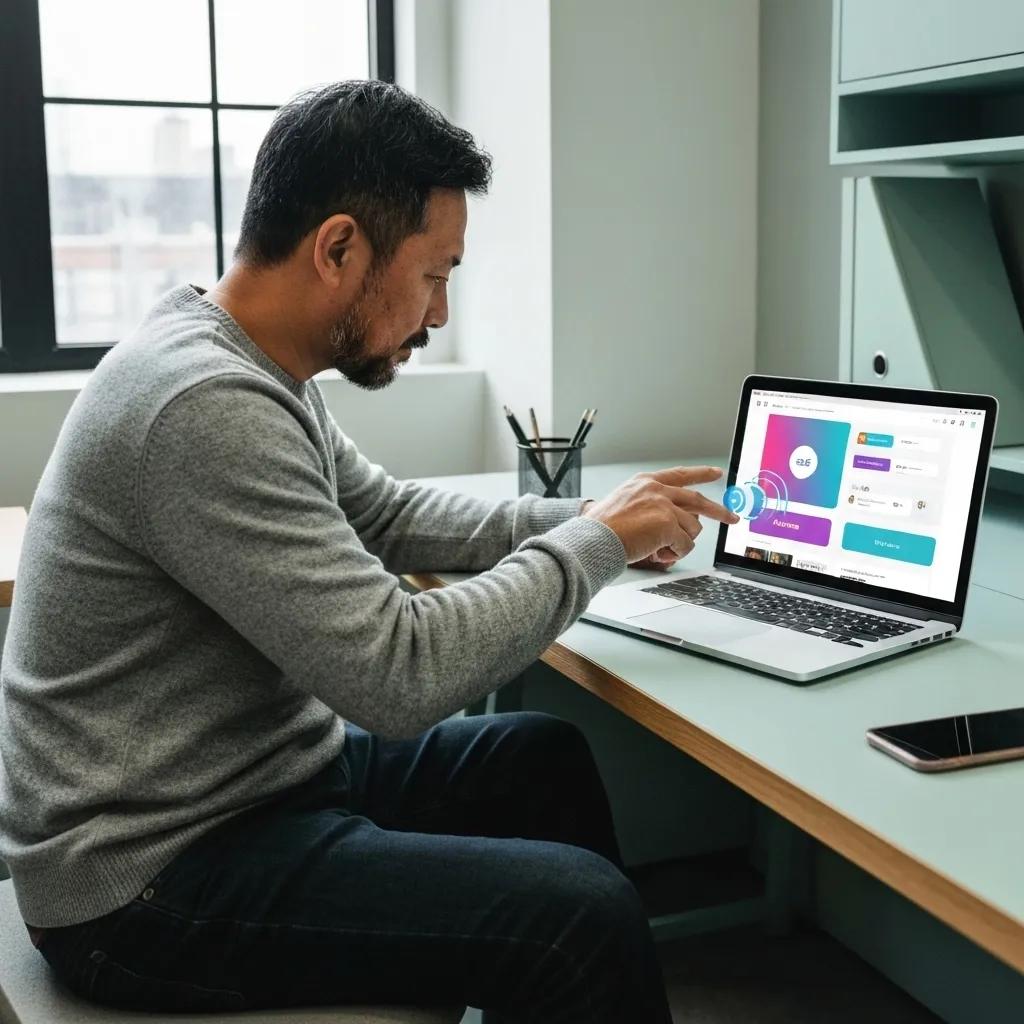In today’s digital landscape, a website is often the first interaction a customer has with a brand, making its design a critical factor in driving sales. But how does website design affect sales? A well-designed website can captivate visitors, build trust, and guide them smoothly through the purchasing process, ultimately boosting conversion rates and unlocking profits.
On the other hand, a poorly designed site can deter potential customers and hinder your business’s growth. In this guide, we’ll explore how good website design can increase sales, from user experience and mobile responsiveness to visual appeal and loading speed.
Cracking the Code: How Does Website Design Affect Sales Potential?
The Impact of Visual Appeal on User Engagement

When it comes to website design, visual appeal plays a crucial role in capturing the attention of visitors and keeping them engaged. Humans are naturally drawn to visually pleasing elements, and this applies to websites as well. A good web design with eye-catching graphics, high-quality images, and a clean layout can create a positive first impression and make visitors more likely to explore further.
Visual appeal doesn’t just stop at aesthetics—it also influences user behavior and perception. Research shows that users form opinions about a website in as little as 50 milliseconds, and visual appeal is a key determinant of whether they stay or leave. A quality website design can convey professionalism, trustworthiness, and credibility, encouraging users to spend more time on the site.
Moreover, visual elements like color schemes, typography, and imagery can evoke emotions and guide users’ attention to key areas of the website, such as calls to action. For example, using contrasting colors for buttons can make them stand out and increase click-through rates.
Incorporating visual hierarchy and ensuring that the design is intuitive also enhances user experience. By making it easy for users to navigate and find the information they need, you increase the likelihood of them engaging with your content and returning to your site in the future.
Importance of Intuitive Navigation for Conversion Rates

No matter how visually appealing your website is, if users struggle to navigate it, they’re unlikely to stick around or convert into customers. Intuitive navigation is key in guiding visitors through your site effortlessly.
A well-designed navigation menu should be clear, organized, and easy to understand. It should provide users with a logical hierarchy of pages so they can quickly find what they’re looking for. Implementing dropdown menus or breadcrumbs can further enhance the user experience by allowing users to easily backtrack or explore related content.
Another important aspect of intuitive navigation is ensuring that important information or calls-to-action (CTAs) are easily accessible from any page. Placing prominent CTAs in strategic locations, such as the header or sidebar, can increase the likelihood of conversions. Additionally, incorporating a search bar can be beneficial for users who prefer to find specific information quickly.
Intuitive navigation also impacts mobile users. As mobile traffic continues to rise, ensuring that your website’s navigation is mobile-friendly is essential. Simplified menus, touch-friendly elements, and fast-loading pages can enhance the mobile experience and reduce bounce rates.
Finally, regularly analyzing user behavior and making data-driven adjustments to your navigation can further optimize conversion rates. Tools like heatmaps and user flow analysis can reveal how visitors interact with your site, allowing you to refine the navigation for better results.
Crafting Compelling Call-to-Actions

A call-to-action (CTA) is a prompt that encourages users to take a specific action, such as making a purchase, signing up for a newsletter, or contacting your business. Crafting compelling CTAs is essential for driving conversions and improve sales.
When designing your CTAs, it’s important to make them visually distinct from the rest of your content. This can be achieved through the use of contrasting colors, bold fonts, or buttons that stand out. The text of your CTA should be concise and action-oriented, clearly conveying what users can expect when they click on it.
Another effective strategy is to create a sense of urgency or exclusivity in your CTAs. For example, using phrases like “Limited time offer” or “Exclusive discount” can create a sense of FOMO (fear of missing out) and motivate users to take immediate action.
Leveraging Color Psychology for Brand Messaging

The colors you choose for your website design can have a significant impact on how visitors perceive your brand and influence their purchasing decisions. Color psychology is the study of how different colors evoke specific emotions and behaviors in people.
For example, blue is often associated with trust and reliability, making it suitable for businesses in finance or technology. On the other hand, red is known to stimulate appetite and urgency, making it popular among food delivery services or e-commerce platforms offering limited-time deals.
It’s important to align the color scheme of your website with your brand identity and target audience. Understanding the psychological effects of different colors can help you create a cohesive and impactful visual experience that resonates with your visitors.
When choosing colors, consider the cultural connotations and preferences of your target market. For example, while green is commonly associated with nature and health in Western cultures, it might carry different meanings elsewhere. Additionally, use colors strategically to guide users’ attention to key elements on your site, such as calls to action or promotional banners.
Balancing color combinations to ensure readability and accessibility is also crucial. Contrast between text and background colors should be sufficient to ensure that content is easily legible for all users, including those with visual impairments.
Mobile Responsiveness: Catering to On-the-Go Customers

In today’s mobile-centric world, having a website that is optimized for mobile devices is no longer optional. With the majority of internet users accessing websites through their smartphones or tablets, neglecting mobile responsiveness can result in lost opportunities and decreased sales.
The design and content of a mobile-responsive website adapt effortlessly to various screen dimensions, providing users with a consistent experience on all devices. This implies that visitors can access identical information and features whether they are viewing the site on a desktop or a smartphone.
Enhancing user experience through mobile responsiveness is crucial for effective SEO. Google and other search engines give preference to mobile-friendly websites, boosting their rankings and increasing visibility to attract more organic traffic.
In addition to improving SEO, a mobile-responsive website helps reduce bounce rates and increases the likelihood of conversions. Users are more likely to stay on your site and make a purchase if they can easily navigate and access the information they need. Furthermore, a responsive design saves time and resources, as you only need to manage one version of your website rather than separate desktop and mobile versions.
The Influence of Loading Speed on Bounce Rates

Users expect websites to load quickly nowadays. If your website takes too long to load, visitors are likely to become frustrated and abandon it altogether. This can have a significant impact on your bounce rates and ultimately affect your sales.
Several factors can contribute to slow loading speeds, such as large image files, excessive use of plugins or scripts, or hosting on an underperforming server. Optimizing your website for speed involves compressing images, minimizing code bloat, and leveraging caching techniques.
By reducing loading times, you can improve user experience and decrease bounce rates. Studies have shown that even small improvements in loading speed can lead to higher conversion rates and increased customer satisfaction.
A faster loading website not only retains visitors but also ranks better in search engine results. Google and other search engines prioritize websites with quicker load times, enhancing your SEO efforts and driving more organic traffic. Moreover, with the rise of mobile browsing, ensuring fast load times across devices is crucial to keep mobile users engaged and reduce bounce rates.
Building Trust Through Credible Web Design Elements

In the online world, trust is a valuable currency. Building trust with your website visitors is essential for converting them into customers. One way to establish credibility is through the design elements of your website. Here are some key strategies:
- Professional Design: Ensure your website looks professional and well-maintained. This includes using high-quality images, avoiding spelling or grammatical errors, and maintaining a clean and organized layout. A polished website appearance signals to visitors that your business is reliable and credible.
- Trust Signals: Displaying trust signals such as customer testimonials, security badges, or certifications can instill confidence in potential customers. These elements provide reassurance that your business is legitimate and trustworthy.
- Transparent Information: Providing transparent and easily accessible information about your business is crucial. This includes clear contact details, an about page that highlights your expertise or values, and detailed product descriptions or service offerings. Transparency helps build trust by showing that you have nothing to hide.
- Consistency: Maintain consistency across your website’s design. Ensure that colors, fonts, and imagery align with your brand identity, creating a cohesive experience that reassures visitors that your business is professional and reliable.
- User-Friendly Navigation: Incorporate easy-to-use navigation to help visitors find the information they need quickly. This shows that you value their time and experience, which further enhances trust.
- Third-Party Validation: Showcase any media features, partnerships, or awards your business has received. These endorsements serve as third-party validation and can significantly enhance your credibility in the eyes of potential customers.
By prioritizing these design elements, you can create a trustworthy online presence that encourages visitors to take the next step in their customer journey.
Enhancing User Experience with Interactive Features

Incorporating interactive features into your website design can greatly enhance the user experience and keep visitors engaged for longer periods of time. Interactive elements encourage users to actively participate with your content rather than passively consume it.
Some examples of interactive features include quizzes or surveys that provide personalized recommendations, interactive product demonstrations or virtual tours, or user-generated content such as reviews or comments. These features not only make the browsing experience more enjoyable but also allow users to feel more connected to your brand.
When implementing interactive features, it’s important to strike a balance between functionality and simplicity. The goal is to enhance user experience without overwhelming or distracting visitors from their main objectives on your site.
Additionally, consider incorporating interactive features that serve a practical purpose, such as live chat options for customer support, calculators that help users determine product suitability, or gamified elements that make browsing more engaging. These features not only enhance the experience but also provide valuable information that helps guide users through their purchasing journey.
By thoughtfully integrating these interactive components, you can create a more dynamic and immersive online environment that encourages longer visits, higher engagement, and increased conversions.
A/B Testing for Continuous Improvement

No matter how well-designed your website is initially, there’s always room for improvement. A/B testing is a method used to compare two versions of a webpage to determine which one performs better in terms of user engagement and conversion rates.
By conducting A/B tests on different design elements such as color schemes, CTAs, or page layouts, you can gather data-driven insights into what resonates best with your target audience. This iterative process allows you to make informed decisions and continuously optimize your website for maximum sales impact.
To implement A/B testing effectively, start by identifying key elements of your website that may influence user behavior. These could include headlines, images, button placement, or even the overall site navigation. Test one variable at a time to accurately measure its impact on performance metrics.
Once the test is complete, analyze the results to determine which version performed better. Use this information to make data-driven adjustments to your website.
Keep in mind that A/B testing should be an ongoing process. As trends and user preferences evolve, continuous testing and optimization are essential for maintaining a competitive edge and ensuring that your website consistently delivers the best possible user experience and conversion rates.
Conclusion: Increase Sales Through Strategic Website Design
Website design plays a crucial role in maximizing sales and driving business growth. By understanding the impact of website design on user engagement and sales, businesses can make strategic decisions that align with their brand identity and target audience.
For expert website design that boosts your sales and enhances your brand, choose Newman Web Solutions. Contact us at (404) 301-9189 or schedule a 30-minute free strategy session to discuss how we can transform your online presence and help your business thrive. Let Newman Web Solutions be your partner in success.





